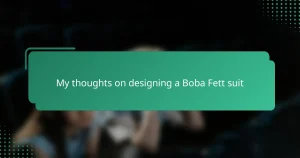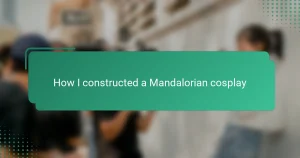Key takeaways
- Understanding LED types and their characteristics is essential for creating visually appealing costumes while preventing issues like flickering or overheating.
- Combining lightweight materials and advanced design techniques enhances the functionality and aesthetics of science fiction props, ensuring they are wearable and engaging.
- Planning the layout and power source placement early on prevents discomfort and ensures reliable performance during use, avoiding disruptions.
- Patience and troubleshooting are crucial skills in working with LEDs, as minor adjustments can significantly improve the overall effect of lighting installations.
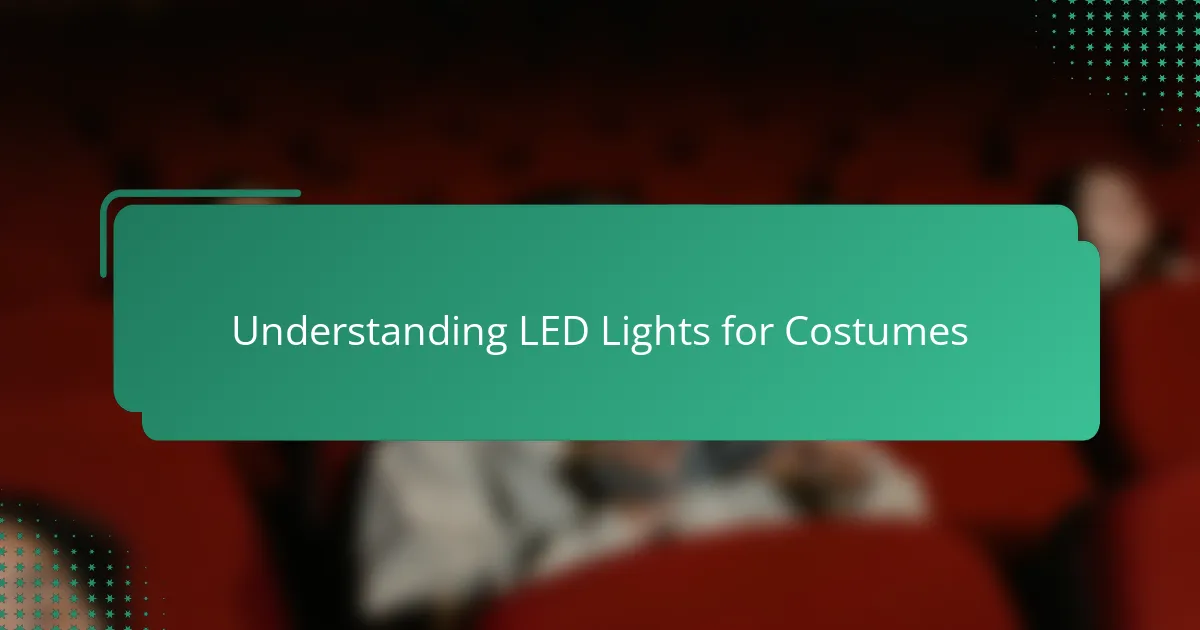
Understanding LED Lights for Costumes
LED lights have a unique way of bringing costumes to life, especially in the realm of science fiction props. When I first started working with them, I was amazed at how versatile they are—tiny bulbs capable of producing vibrant colors and patterns that instantly capture attention. But understanding the different types of LEDs, like single-color versus RGB, is crucial because each has its strengths and limitations for creative expression.
One thing I learned quickly is how important voltage and power sources are for maintaining consistent brightness without overheating. Have you ever experienced your carefully designed costume flickering annoyingly or going dark at the worst moment? I certainly have, and it taught me to pay close attention to battery types and wiring techniques to avoid those frustrating pitfalls.
Beyond technical specs, it’s fascinating how LEDs interact with various materials—some fabrics diffuse light beautifully while others reflect it sharply. Experimenting with these effects became a creative playground for me, revealing how a simple LED can transform a basic suit into something truly futuristic and immersive.
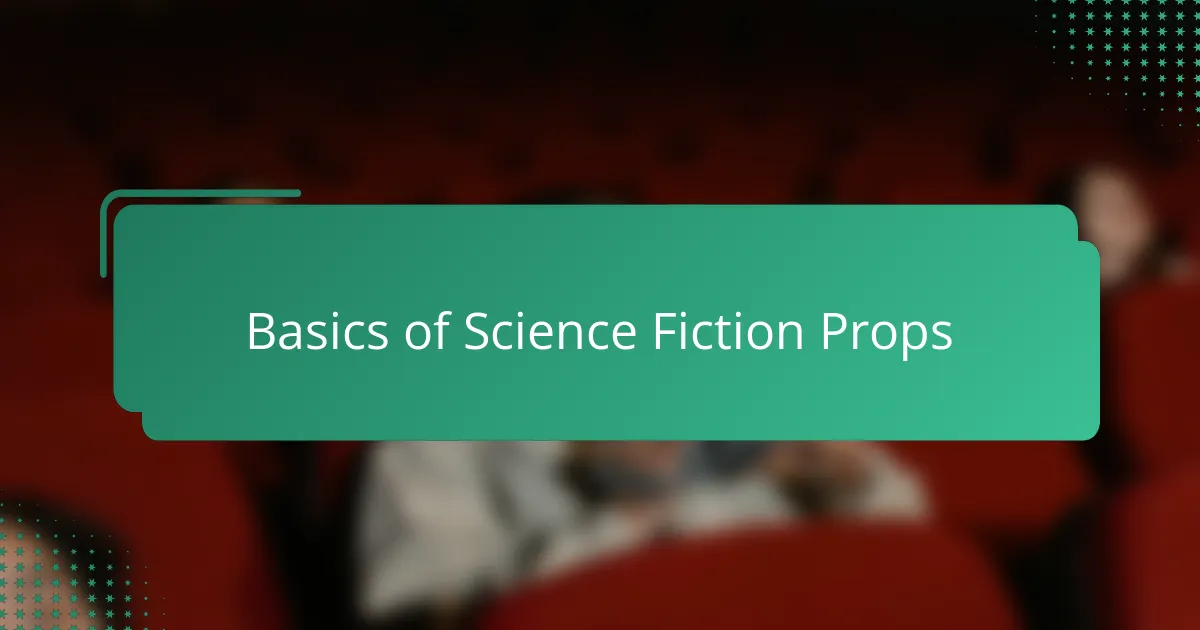
Basics of Science Fiction Props
Science fiction props often rely on materials and design choices that convey otherworldliness and advanced technology. When I first began crafting these props, I noticed how essential the blend of lightweight materials and sleek finishes was to achieve that futuristic look. Have you ever held a prop that felt heavy or clunky? It instantly breaks the illusion, and I learned to avoid that by carefully selecting plastics, foams, and metallic paints.
Another aspect I found intriguing is the balance between aesthetics and functionality. Science fiction gear isn’t just about looking cool; it often needs to be wearable or interactive. In my experience, incorporating moving parts or light effects requires patience and problem-solving, but the thrill of seeing everything come together makes it worthwhile.
Lastly, attention to detail is what sets great sci-fi props apart. I remember spending hours sanding or weathering a piece to simulate wear from space travel—small touches that tell a story. It’s like giving your creation a history, and that depth always draws people in, making the imagination take flight.
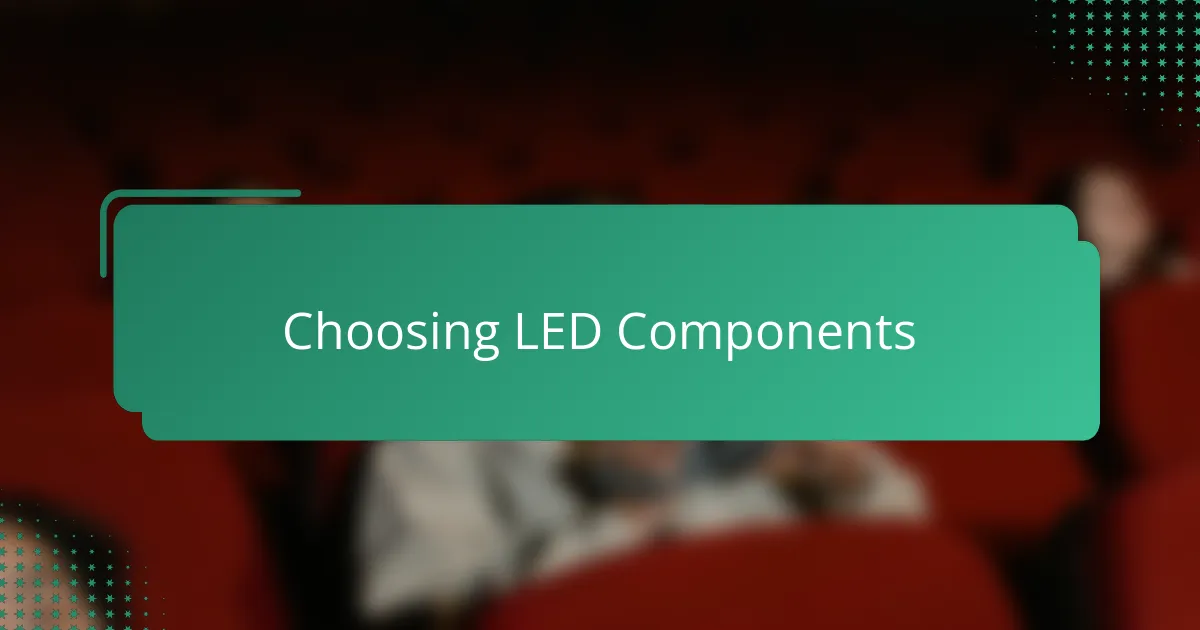
Choosing LED Components
Picking the right LED components felt like navigating a maze at first. I quickly realized that the choice between tiny surface-mount LEDs and the more bulky, traditional ones impacted not just the look but how comfortable the costume was to wear. Have you ever tried fitting a bright but rigid LED strip onto a curved surface? Trust me, flexibility matters more than I initially thought.
Colors were another tricky aspect. Deciding whether to go with single-color LEDs or splash out on addressable RGBs made me weigh creativity against complexity. I remember one project where the RGB option seemed perfect for dynamic lighting effects, but the wiring almost drove me crazy—patience is key here.
Power handling also became a huge learning curve. Matching LEDs to a suitable power source without adding bulk or risk of overheating pushed me to experiment with different battery types and resistors. There was this one costume where a simple miscalculation led to a sudden blackout during a convention, a lesson etched in my memory forever. Have you faced that kind of embarrassing moment? It can sting, but it’s how you get better.
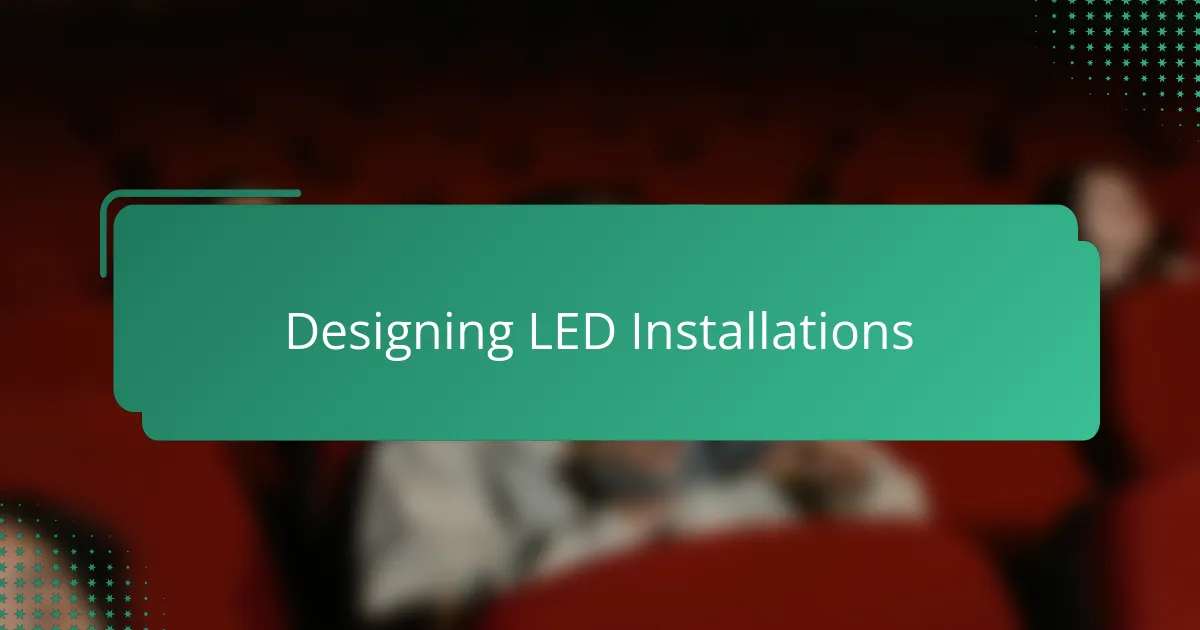
Designing LED Installations
Designing LED installations always starts with imagining how the light will move and interact with the costume’s form. I used to sketch patterns on paper, thinking about where each LED should go for maximum impact, but nothing prepared me for the challenge of translating those ideas onto three-dimensional surfaces. Have you ever tried wrapping a flat light strip around a curved arm? It’s trickier than it sounds, and that trial-and-error process taught me the value of patience and adaptability.
Choosing the layout also means balancing visibility and wearer comfort. Early on, I learned that stuffing too many LEDs into a small area can create hotspots—both literally and figuratively. The heat buildup was uncomfortable, and the glow sometimes overwhelmed the design rather than enhancing it. I found that spacing LEDs thoughtfully and incorporating heat sinks or breathable materials helped maintain brightness without turning the costume into a mini furnace.
Then there’s the wiring maze beneath the surface, often hidden but vital. I once underestimated how complex routing wires could get when I tried to keep them invisible yet accessible for repairs. That experience taught me to plan wiring channels ahead of time and use connectors that make troubleshooting easier. Trust me, when a light suddenly goes out mid-performance, quick fixes save the day—and a lot of stress.
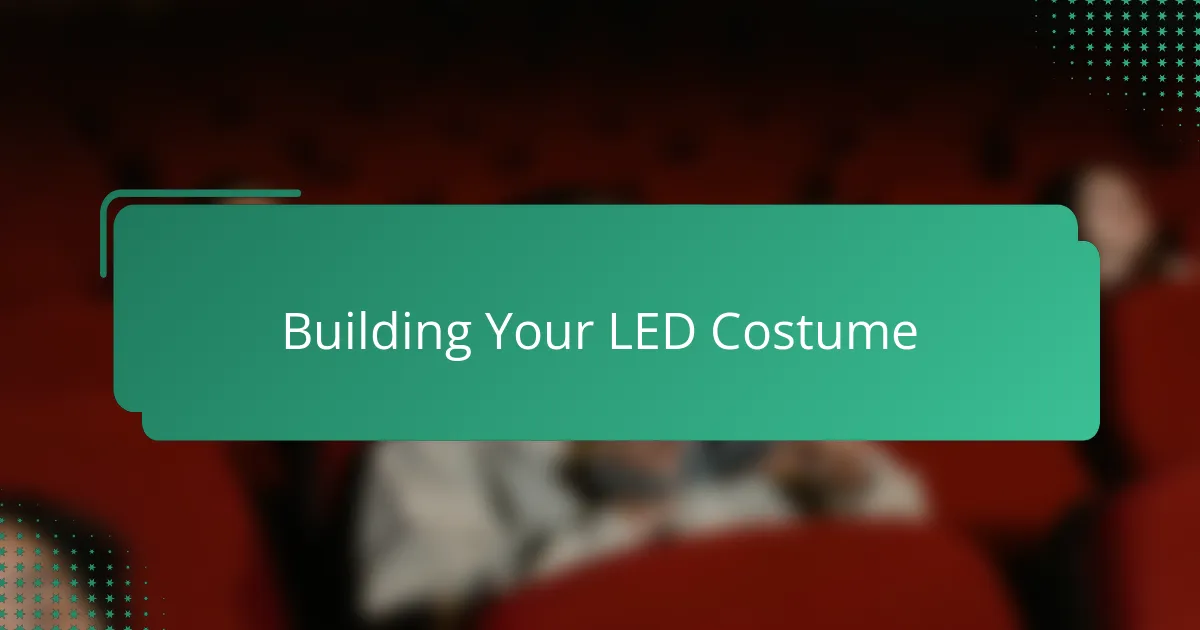
Building Your LED Costume
Building your LED costume is where the magic starts to take shape, and I quickly realized it’s part creativity, part engineering. Have you ever felt that thrill and frustration of soldering tiny wires onto minuscule LED pads? I certainly have—it’s a delicate dance that demands steady hands and patience, but seeing those lights come alive makes it utterly worth it.
One lesson I learned the hard way is the importance of planning your power source placement early on. Batteries are bulky, and stuffing them into awkward spots can throw off your costume’s balance or comfort. I found that distributing smaller battery packs strategically, rather than one big block, kept my design wearable without sacrificing runtime.
Another trick that changed the game for me was integrating diffusers directly onto the LEDs or embedding them into semi-transparent materials. This not only softens harsh glows but also spreads the light evenly, turning sharp points of brilliance into smooth, futuristic glimmers. It transforms a simple costume into a captivating light sculpture—have you tried layering fabrics with LEDs yet? It’s a game changer in bringing sci-fi costumes to life.
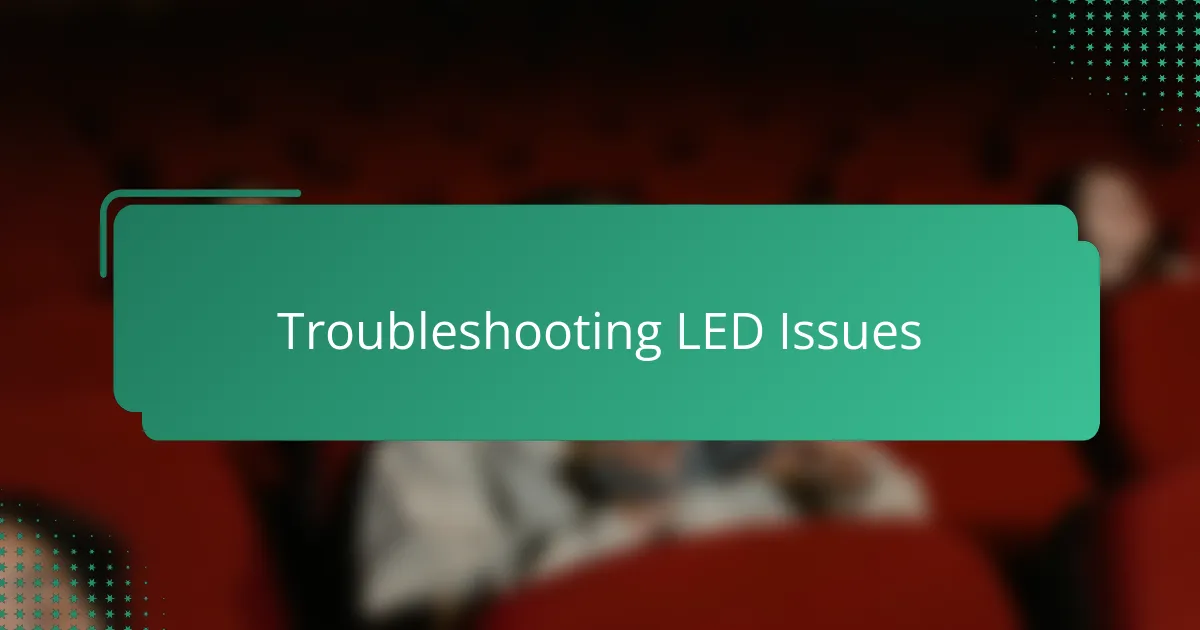
Troubleshooting LED Issues
One frustrating obstacle I ran into often was flickering LEDs that seemed to have a mind of their own. At first, I blamed the lights, but after some digging, I realized loose connections or insufficient power supply were usually the culprits. Have you ever pulled out your wiring only to discover a single wire barely clipped in? That moment of relief—and a quick fix—felt like winning a small battle.
Heat buildup also caught me off guard more times than I care to admit. Early on, I assumed LEDs hardly warmed up, but packing too many in tight areas created unexpected hotspots that dimmed the lights or even melted nearby materials. Learning to space out LEDs and incorporate mini heat sinks wasn’t glamorous, but it saved my costumes from premature failure—and me from a sweaty, panicked cleanup.
Sometimes, the problem was simply faulty LEDs or mismatched resistors. I remember this one time at a convention when half my lights died mid-show because I underestimated the power draw. It was embarrassing but eye-opening—now I always double-check compatibility and carry spare parts. Have you been caught off guard like that? Preparing for glitches is part of the craft, and those quick problem-solving moments become stories worth sharing later.
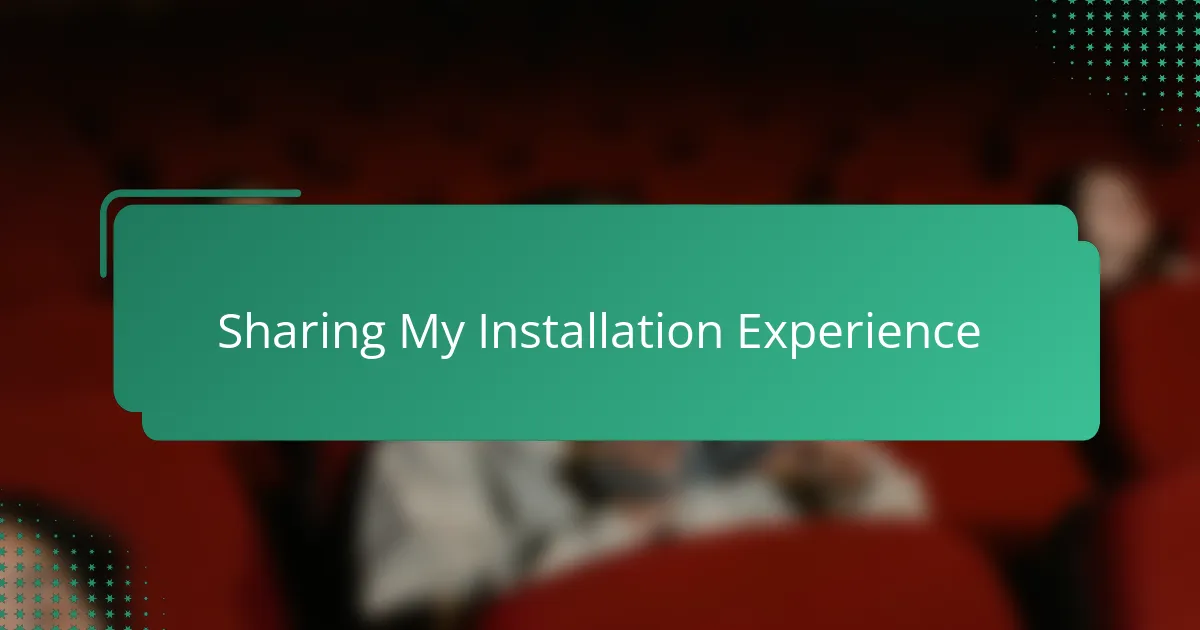
Sharing My Installation Experience
When I first started installing LEDs on costumes, I was both excited and overwhelmed. The thrill of seeing those tiny lights come alive was incredible, but I quickly realized that securing wires neatly and choosing the right adhesive could make or break the entire setup. Have you ever spent hours positioning LEDs perfectly, only to have a poor connection spoil the effect? That frustration taught me to slow down and prioritize solid groundwork over rushing.
One moment stands out vividly: I was fitting LEDs inside a narrow arm piece when the strip refused to bend the way I wanted. After several attempts and a bit of creative wiring rerouting, it finally clicked into place, and the glow was even better than I imagined. It made me appreciate how much patience and flexibility this craft demands—both literally and figuratively.
What surprised me most was how each installation carried its own personality, shaped by the costume’s design and my choices. Sometimes, a simple alteration like swapping out a battery pack or repositioning a diffuser transformed the lighting from dull to dazzling. It’s in those small victories that I found the real joy of working with LEDs, making every struggle feel worthwhile.
